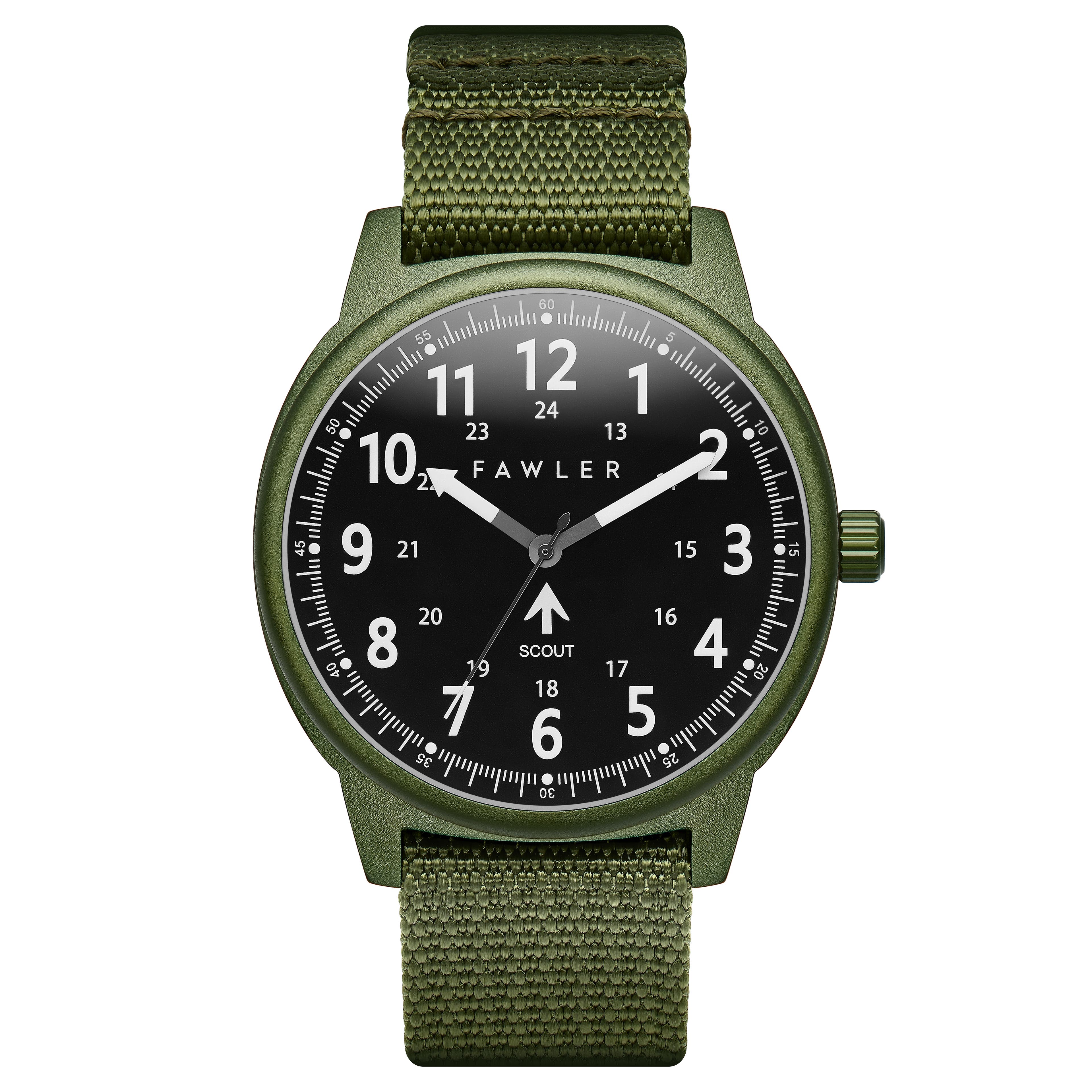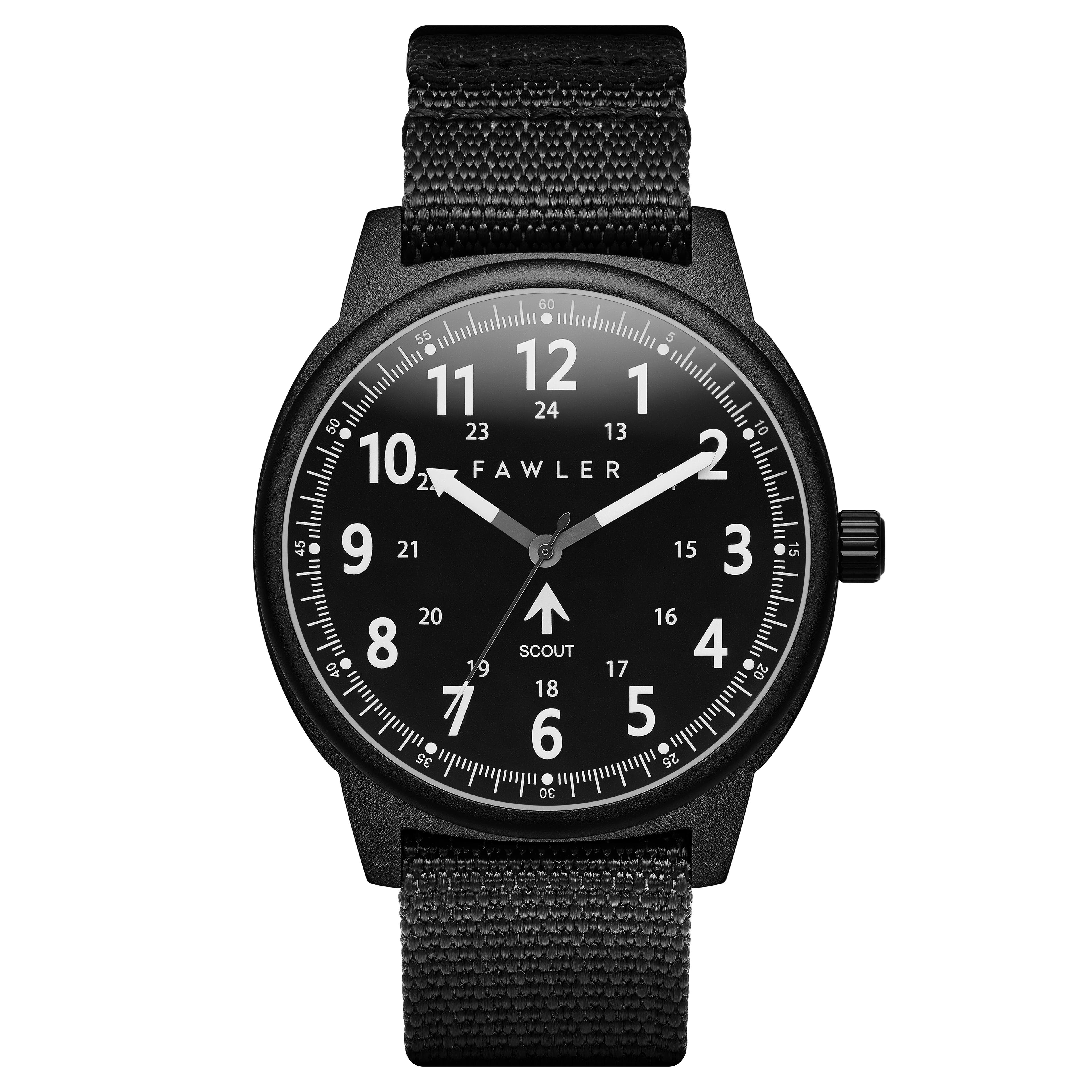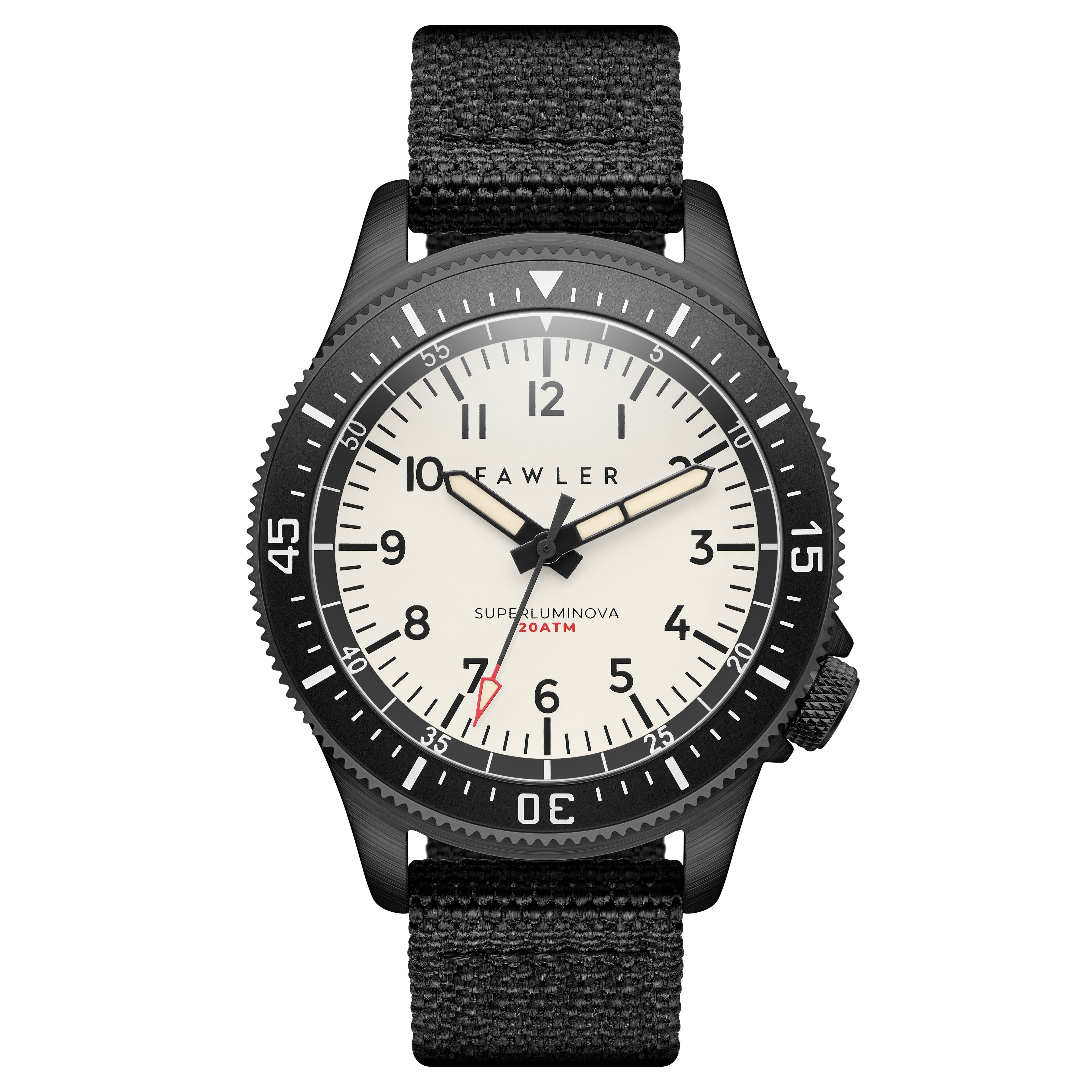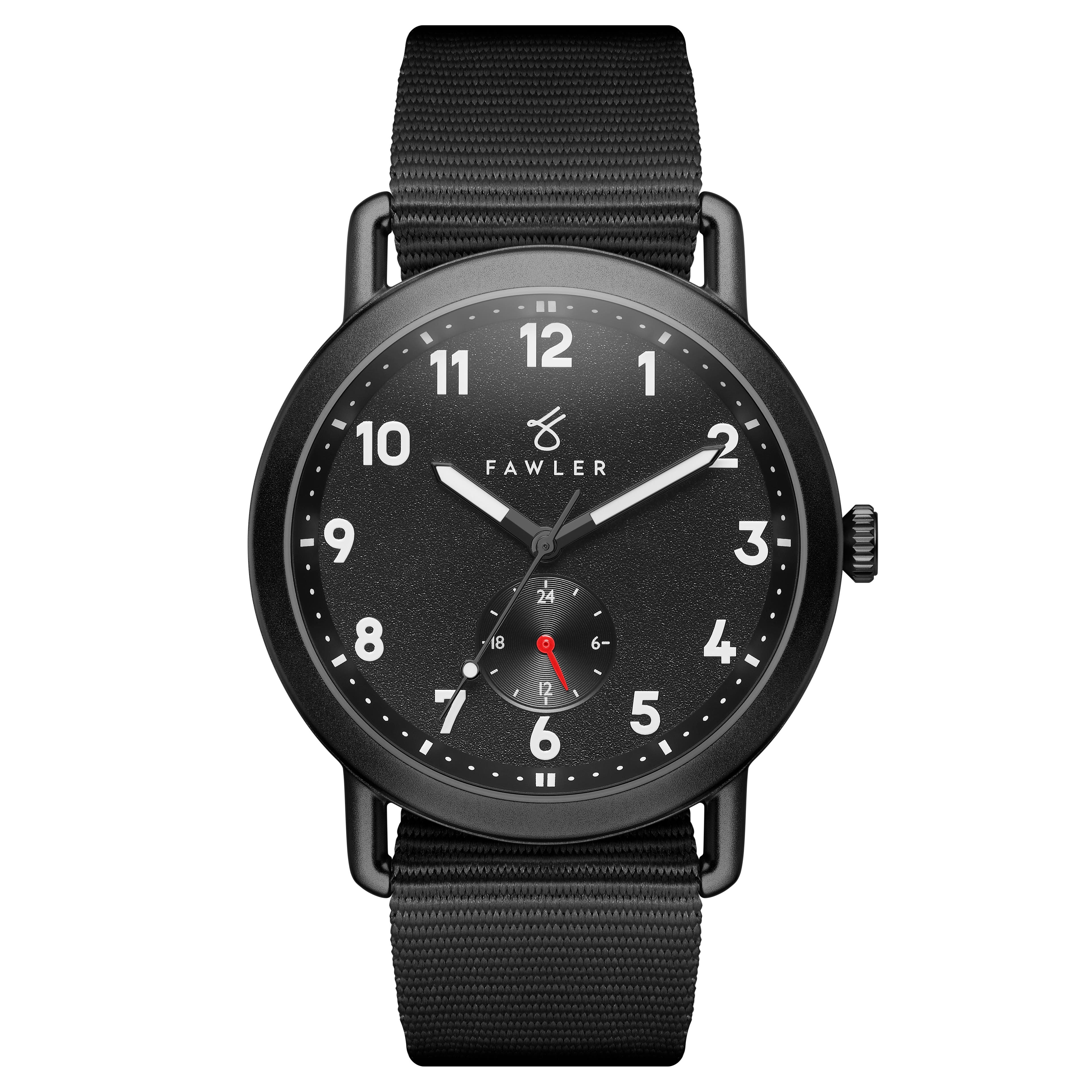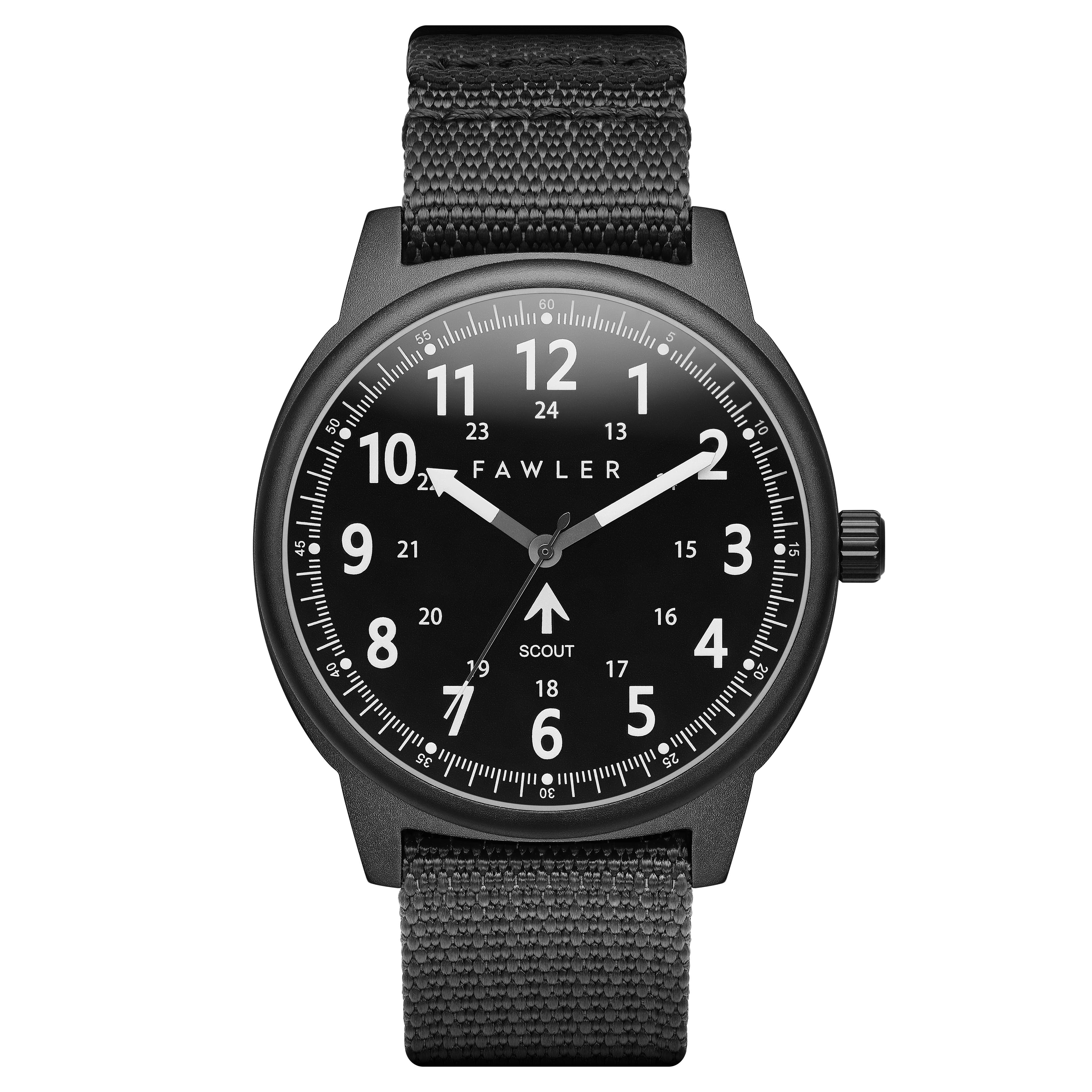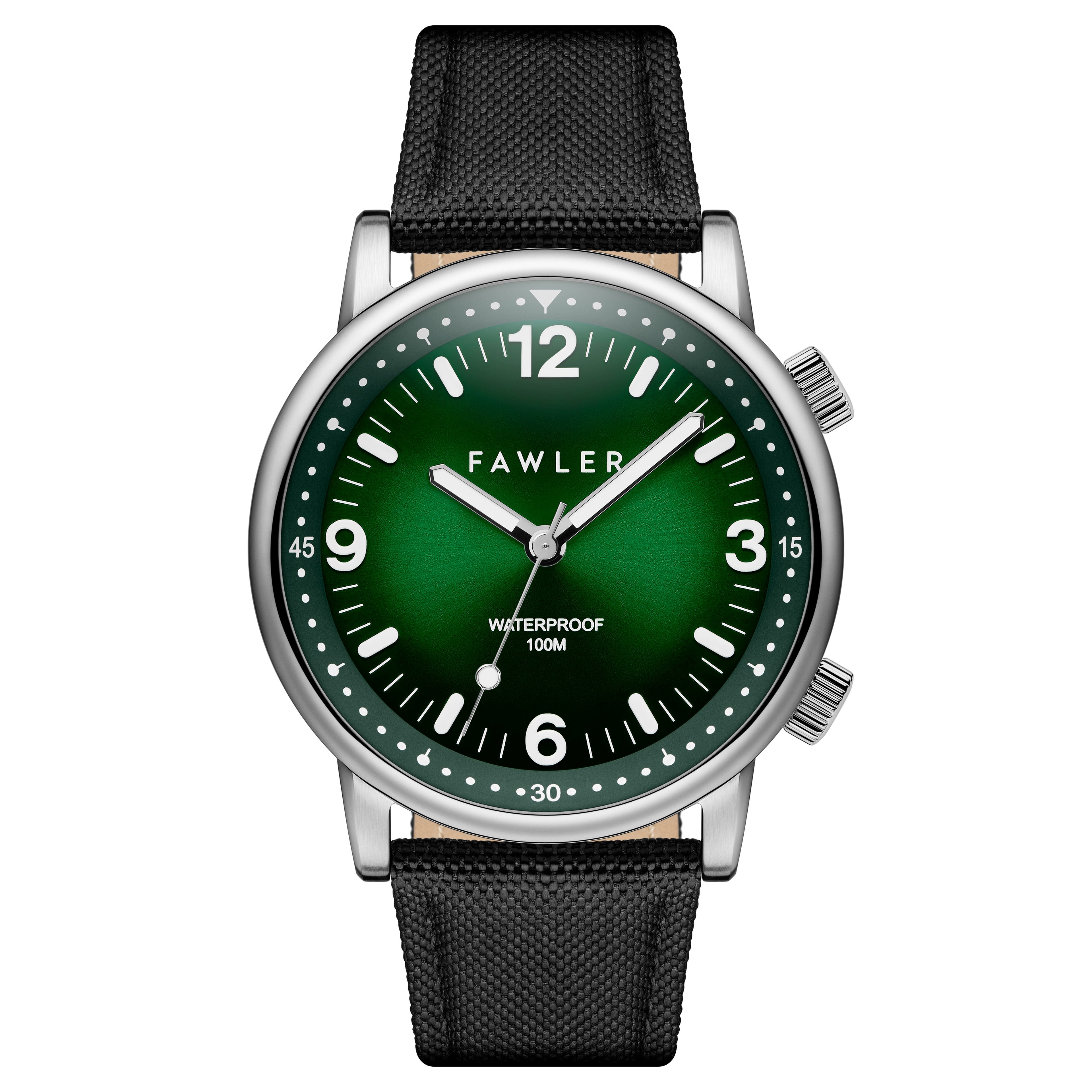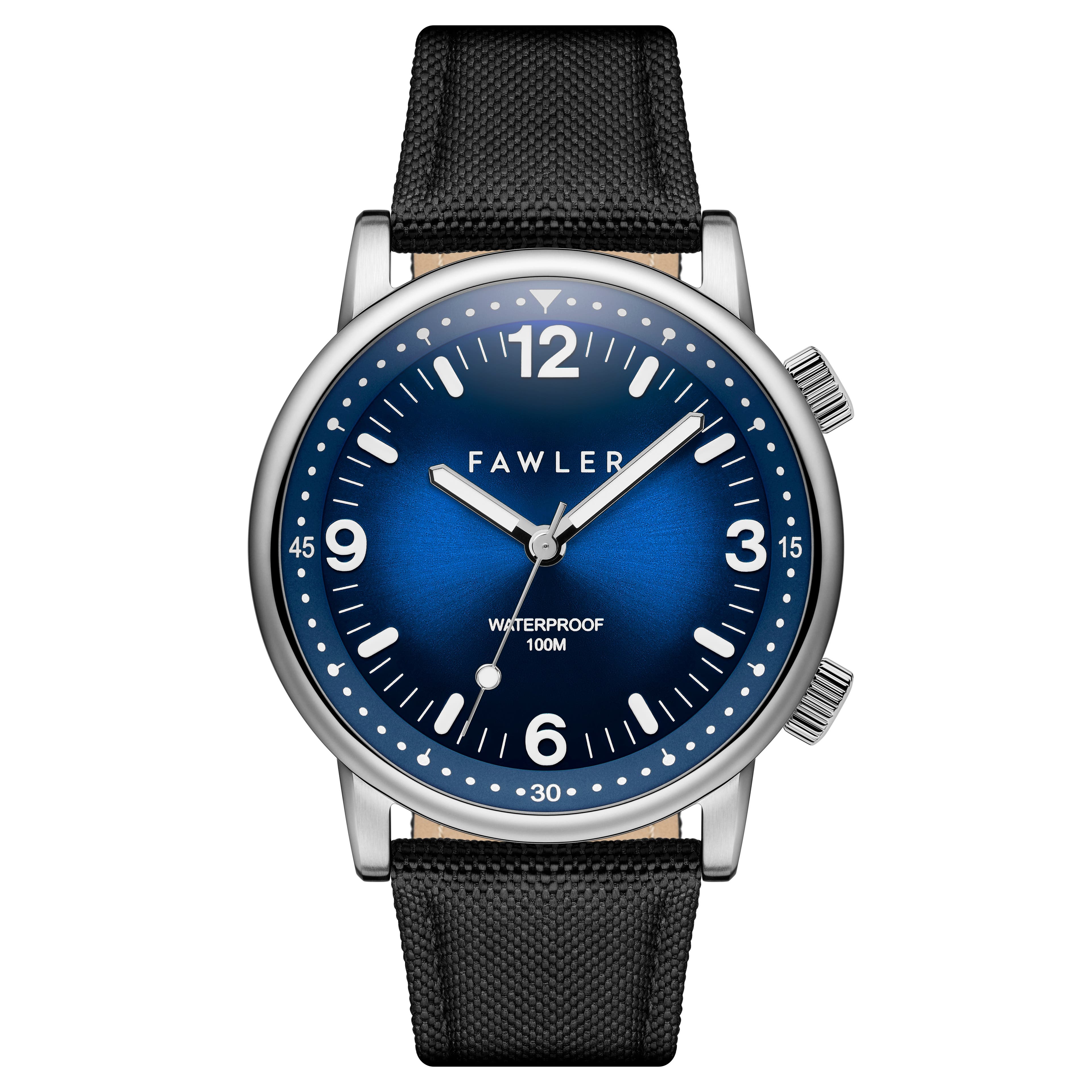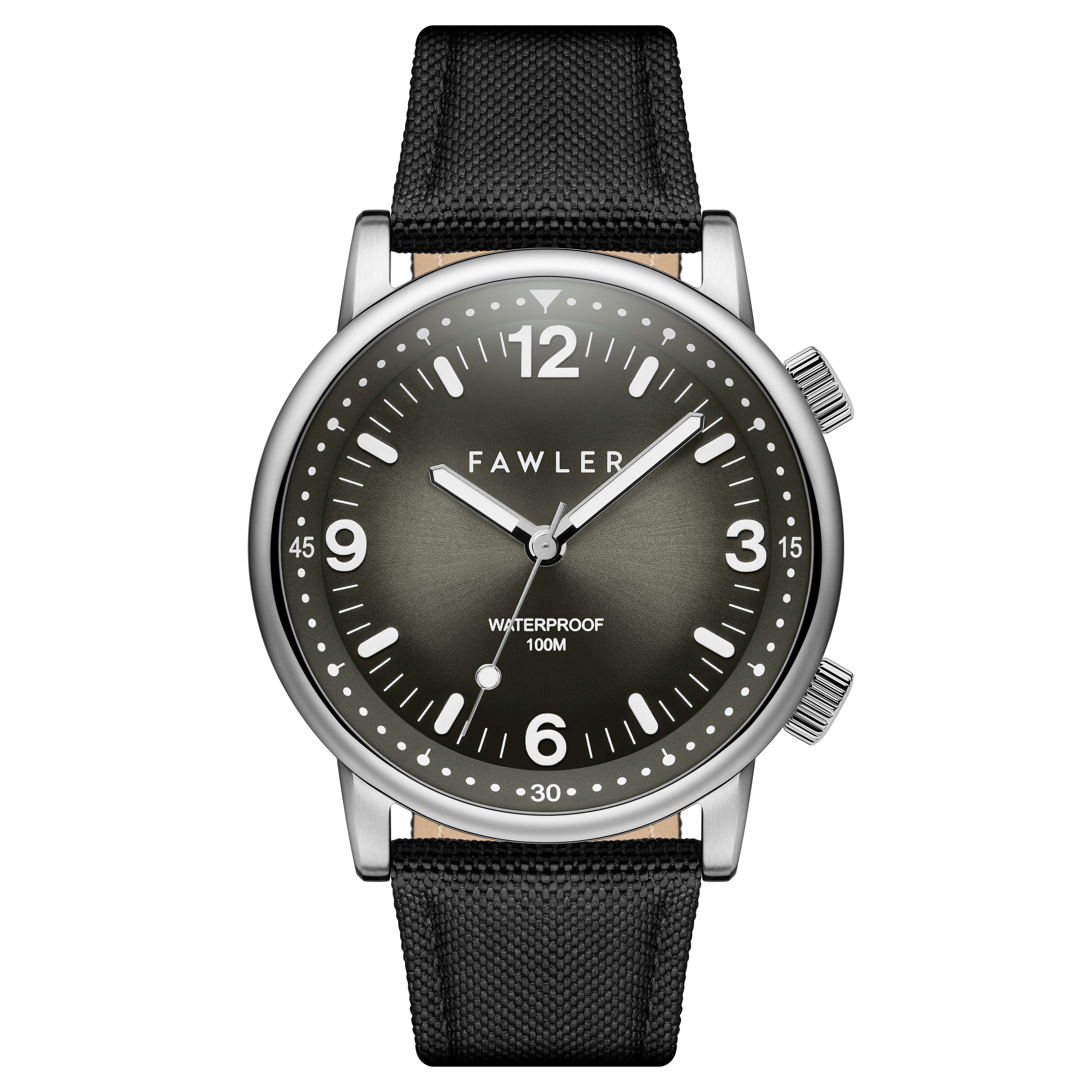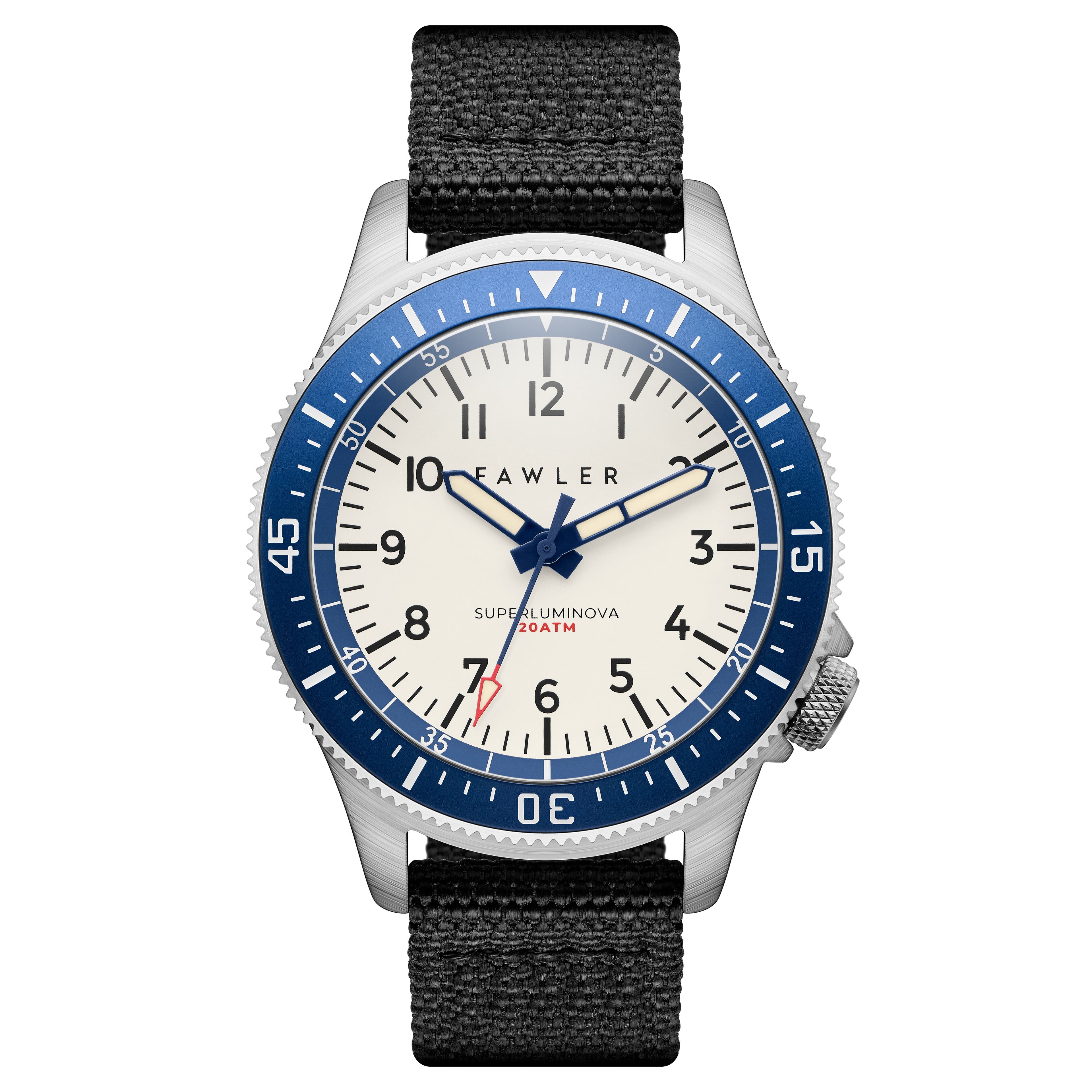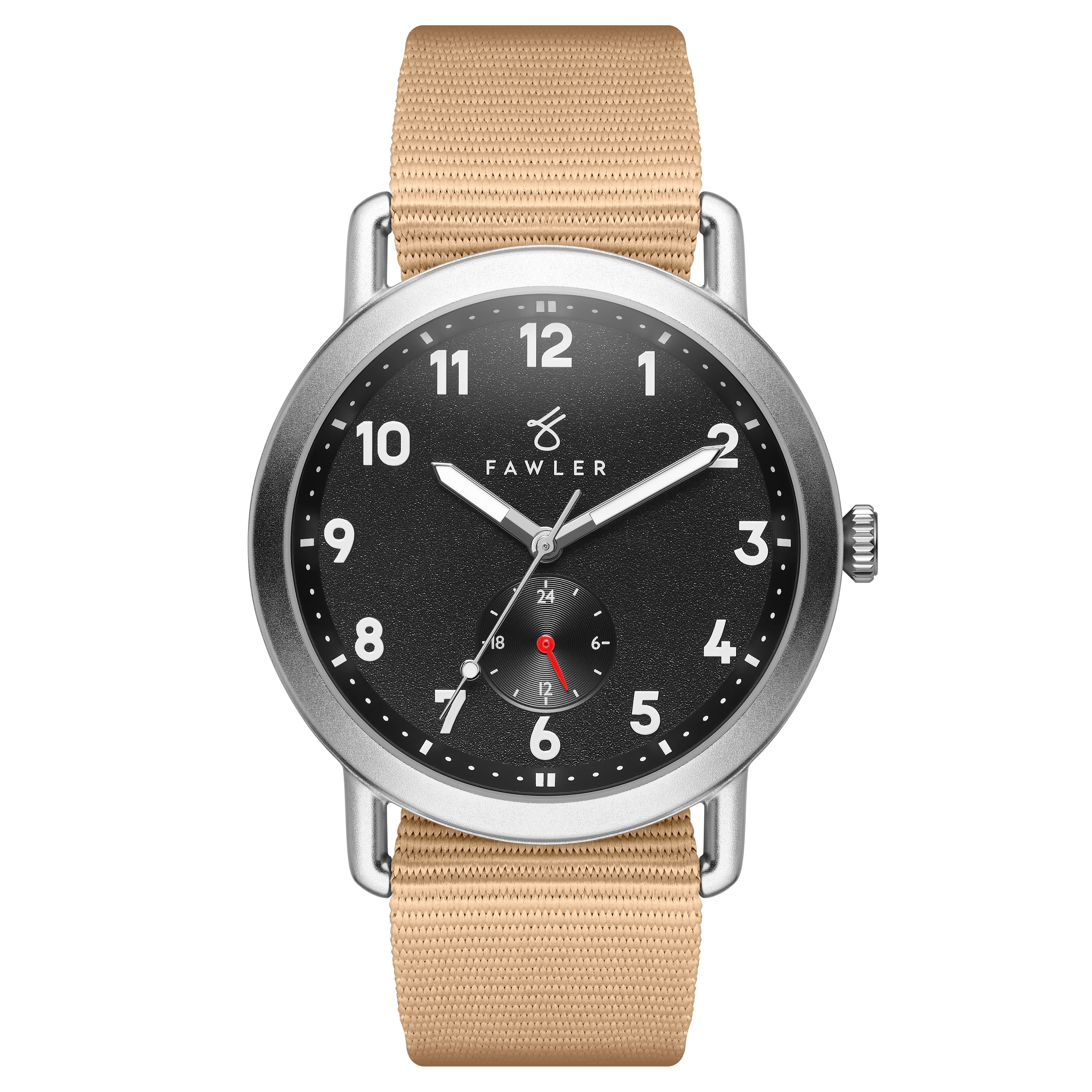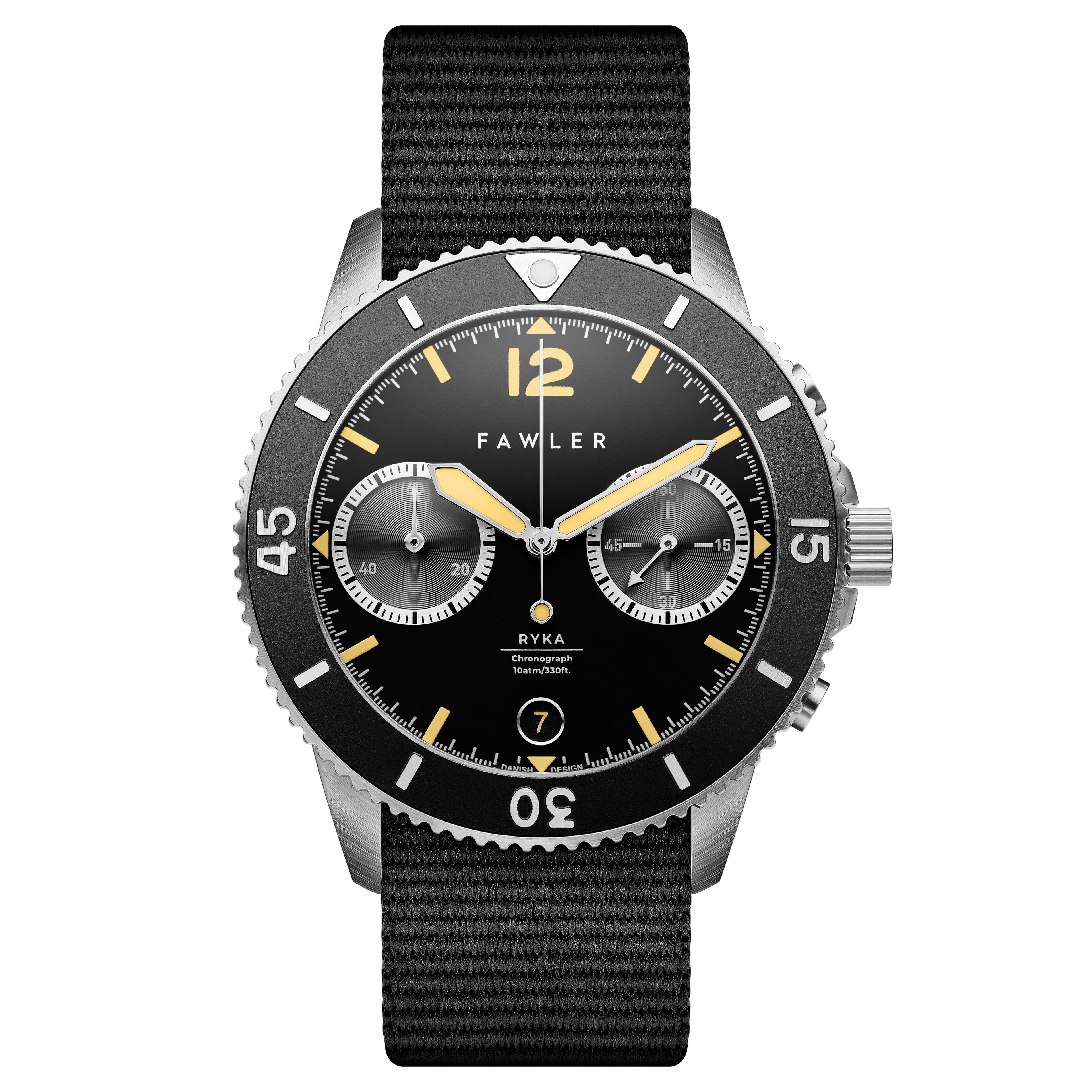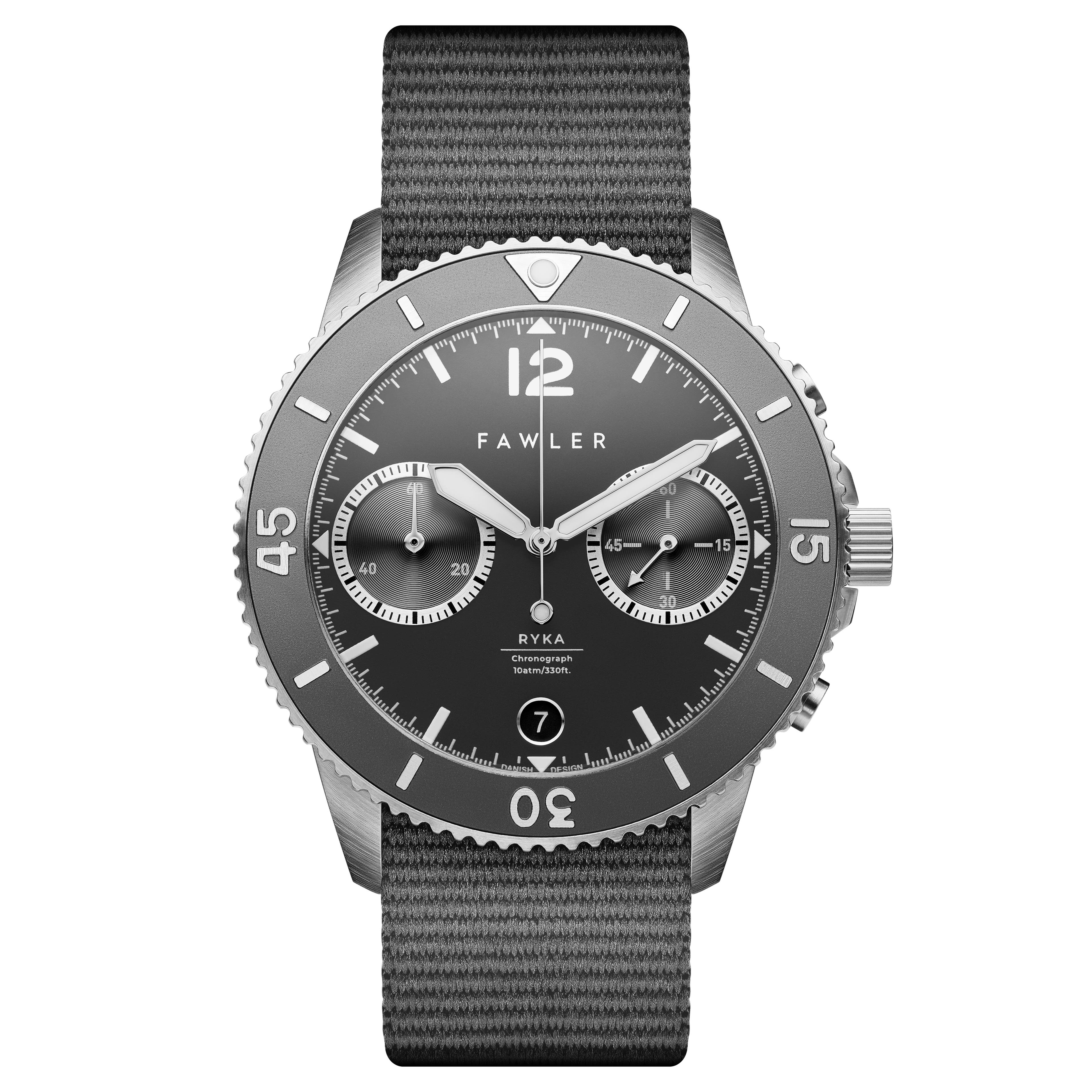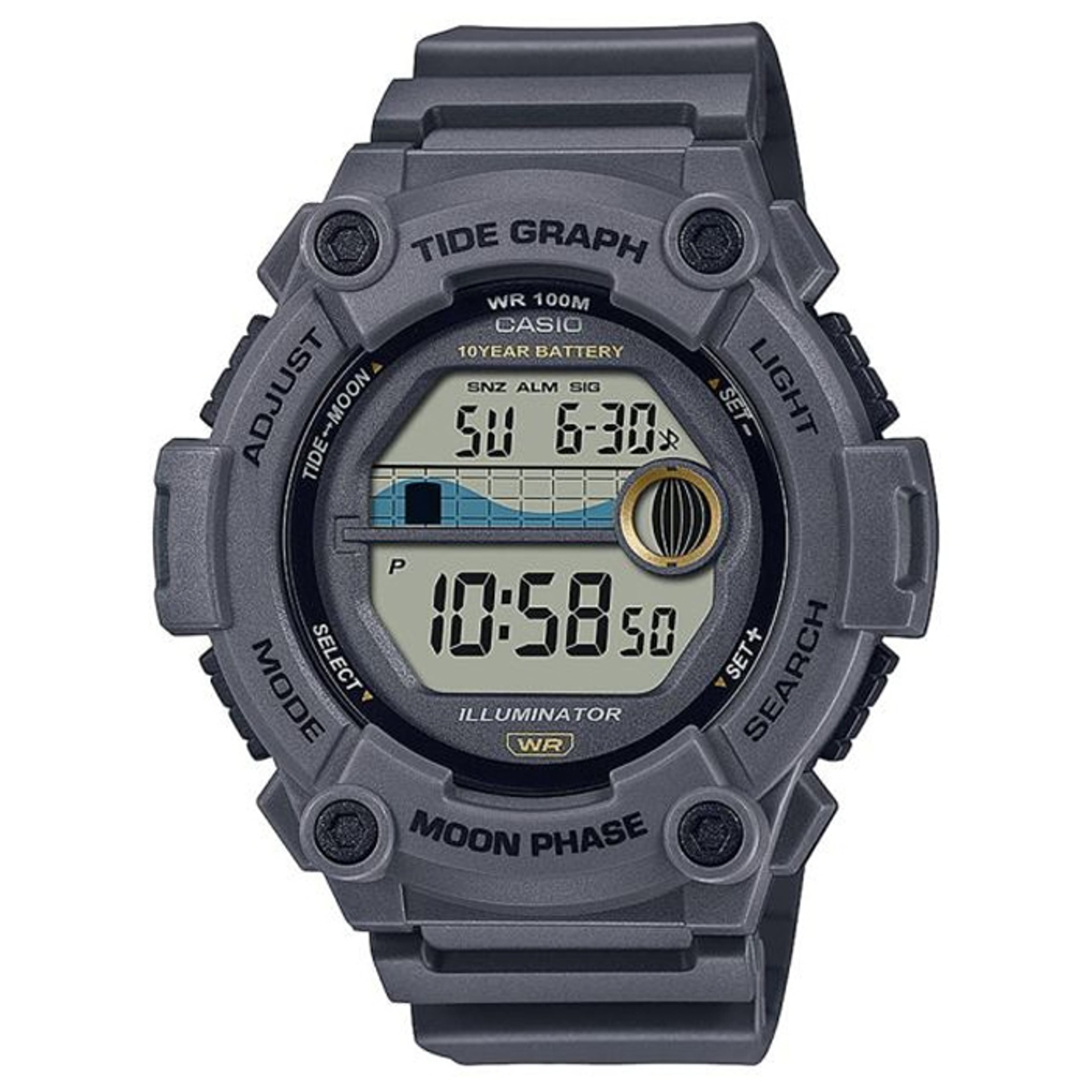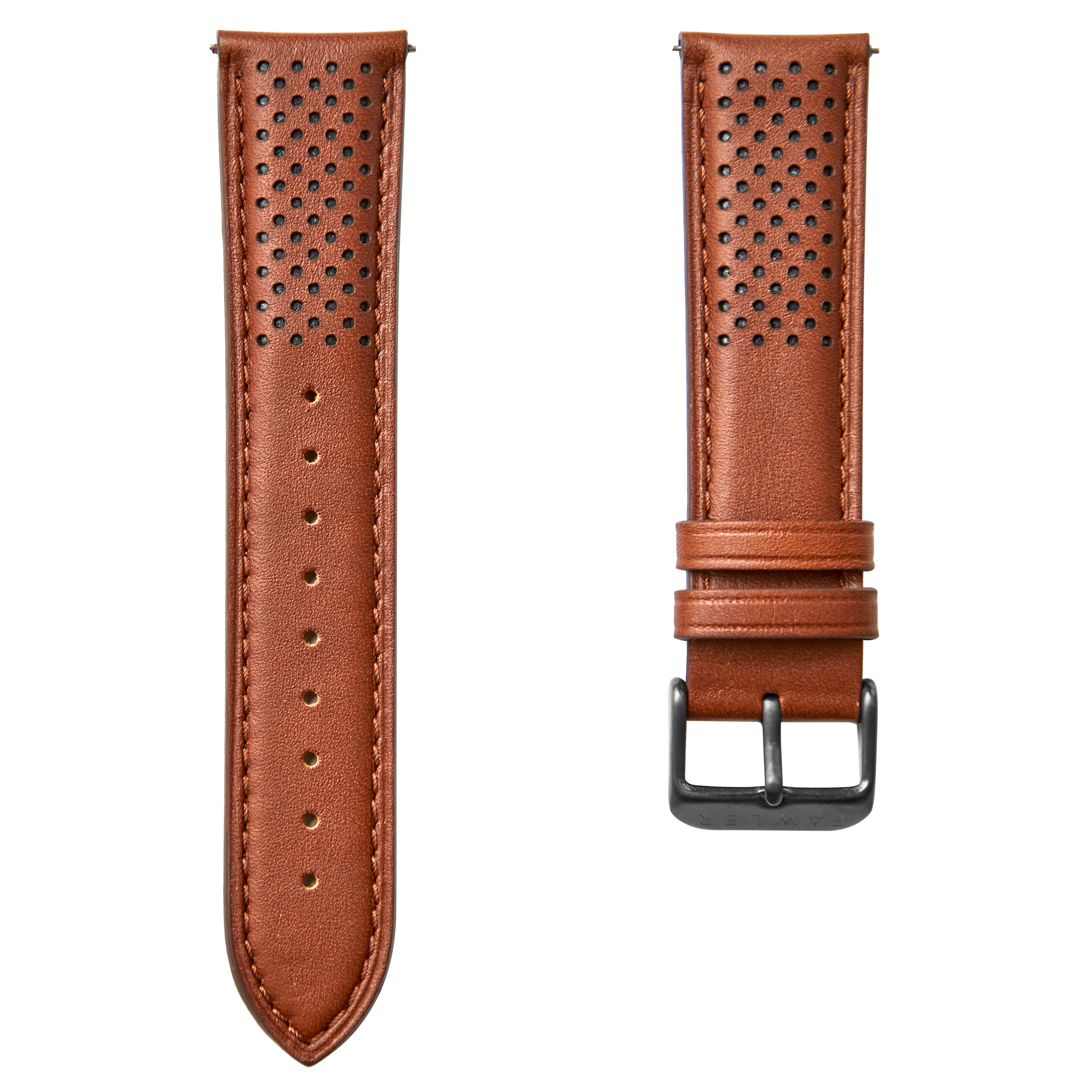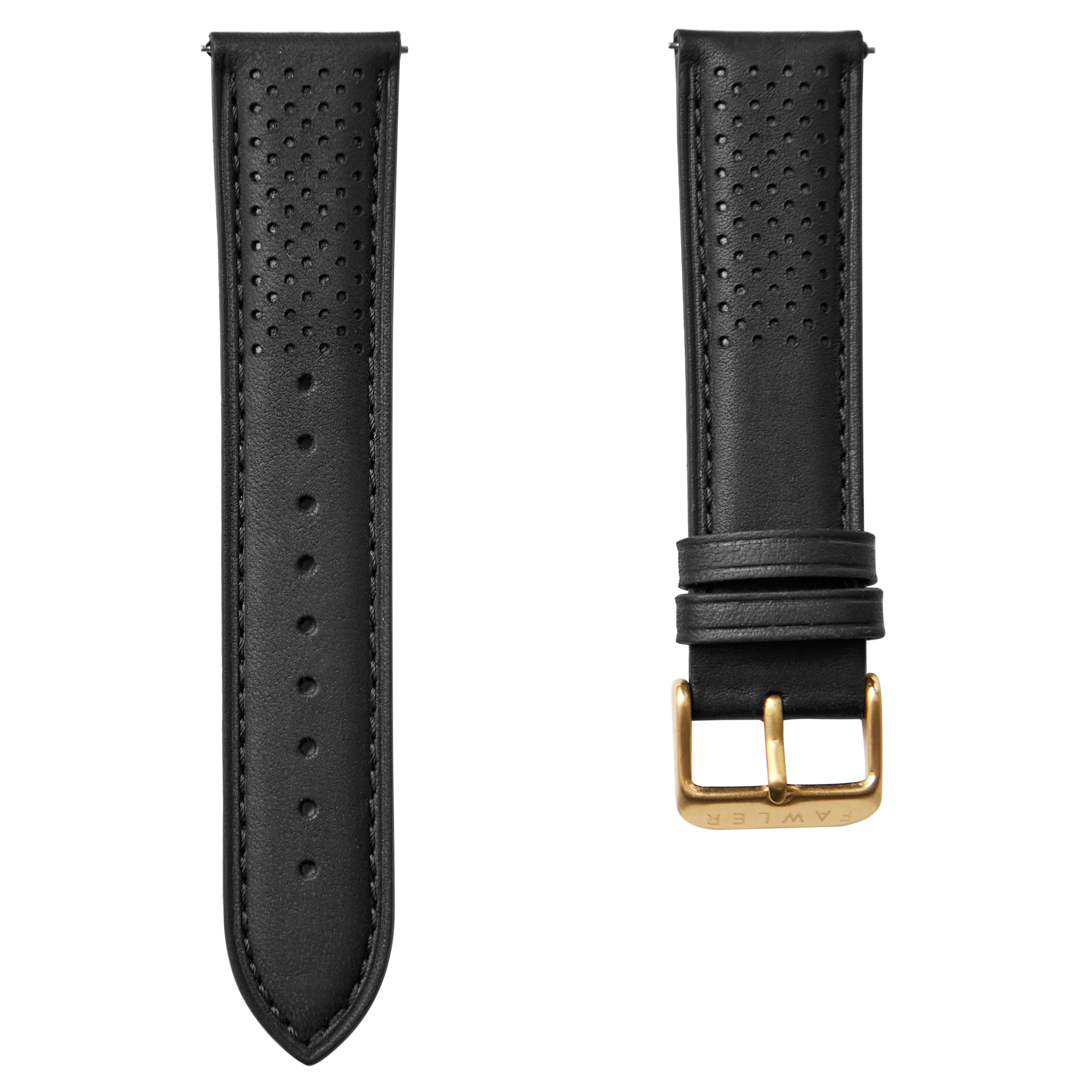How to Wear a Men’s Watch with Style
Level-up your watch game by learning how to wear yours the right way. From dress watches to casual ones, this comprehensive guide breaks down the must-knows for an instant style upgrade.
You know how a belt should match your shoes? It’s sort of the same deal with watches.
Obviously, the rules apply mostly to formal events. Technically, you’re free to wear a watch with any clothes (footwear included) as you please. But for those who appreciate good etiquette and style, matching your watch to your outfit can sort the men from the boys.
Remember – a watch is an accessory. It should enhance your look, not dominate it.
How to Match a Watch to Your Outfit
Matching your watch to your outfit needn’t be complicated – it’s a matter of thinking like-for-like.
Match up your metals – silver with silver, gold with gold. Take note of the metal elements of your outfit – buckles on your belt and shoes, your rings, cufflinks – and match them with your watch.
The watchband is also important. Like belts and shoes, leather watch bands should match other leathers in your attire. A brown leather watchband is worn with brown leather shoes and belt. A black band means a black belt and shoes.
The same applies to the style of the shoes. Dress shoes work best with a dress watch, while trainers look good with a sports watch.
Light-coloured faces are often reserved for day wear, while grey, khaki, black or brown faces are well-suited for evening attire.
On which wrist should a man wear his watch?
Some sources say that a man should wear his watch on his less dominant hand.
If you’re right-handed, wear your watch on the left hand, and vice versa. The logic here is that the watch will not be moved around as much, which may maximise its lifespan. It also means you’ll still be able to check the time while using your dominant hand for other activities… like scrolling through this article.
Traditionally, a watch should be worn loosely enough to allow full use of your wrist. The face should sit next to your ulna (the bone on the outside of the wrist). Your watch shouldn’t poke out from beneath your shirt cuff when you’re standing comfortably. It should only appear when your arm is bent.
The one oh-no-he-didn’t is wearing your watch over your shirt cuff. Just. Don’t.
Watch Style Types
Dress Watch/Luxury Watch
Now more popular than ever, luxury dress watches are your glam piece. They typically feature a narrow face and narrow leather strap to match. The dial display is usually simple and minimalistic (no fancy chronographs or moon phases).
When To Wear a Dress Watch
If you’re only ever going to own one watch, make it a dress watch. The beauty of a men’s dress watch is its versatility, and it’s as good with a suit as it is with jeans.
It’s your piece for smart, formal and wherever you want to look your best and/or make an impression.
- The office
- Business meetings and interviews
- Special occasions: weddings, garden parties, anniversary dinners
- Black-tie events
- The opera or theatre
- The country club
A dress watch will add to your look. It’ll take your suit from sensible to suave. It’s also fine, and quite striking, for casual weekend wear.
Field Watch
The original ‘trench watch’, field watches are designed to withstand extreme conditions. They’re tough, they’re rugged and they go the distance. They’re also designed to be readable at night, so they feature large, highly-legible dials with luminous hands, a high-contrast black dial and white numbering. Oversized watches are particularly popular with military pilots.
With functionality in mind, the case is usually stainless steel and straps in leather or canvas.
The ‘hacking’ second hand began with these military-style watches. This is a function that stops the second hand when you pull the crown to the time-setting position, allowing the wearer to set it to the second. It was developed so that soldiers could synchronize their watches with one another.
Field watches are usually covered in black, green or grey PVD. PVD (physical vapour deposition) involves vaporising a material (such as titanium aluminium nitride) and bonding it with the watch strap material to make it more durable and attractive. Diamond-like carbon (DL) is a type of PVD applied coating and is usually black or grey.
When to Wear a Field Watch
With its hard-wearing design, a field watch is going to serve you well in demanding conditions such as the sports field, hiking, or in the garden (yes, gardening is tough!).
It’s also your accessory for everyday casual wear. Clean, sharp and rugged – Team it with jeans and t-shirt and you’re ready for anything. It’ll go well with your work boots and won’t be out of place with jeans and trainers either. Just don’t wear it with your black-tie outfit.
Sports Watch/Dive Watch
James Bond made these guys famous. The modern diving watch was designed to provide scuba-divers with an accurate timekeeper of their remaining air supply. Most dive watches are water-resistant up to at least 100 metres.
A sports watch, designed for swimming rather than diving, may be waterproof but to shallower depths.
Dive watches are medium-sized, bold-faced and generally made of corrosion-resistant metals such as stainless steel. They’re smart and versatile enough to be dressed up or down.
The chronograph watch (technically a sports watch) was invented when King Louis XVIII of France wanted an accurate timekeeper for his horse races. Today, the modern sports watch is a must-have accessory for sailors, runners, hikers, mountaineers, cyclists and the guy wanting to make every second of his day worthwhile.
Like the diving watch, the sports watch is best suited to physical activity and can feature complications such as heart rate monitors, altimeters, barometers, compasses and GPS tracking.
When To Wear a Sports Watch or Dive Watch
Many sports watches are elegant enough to extend to ‘smart-casual’ or even a fashionable accessory and are perfectly acceptable for everything from office wear to dining out, shopping and travel.
According to tradition, dive watches and suits are a no-go zone. The sheer bulkiness of a dive watch simply doesn’t work with the smooth lines of a suit. Unless you are 007 and just swam up to a casino in Macau – then you can do whatever you want.
Aviator Watch/Pilot Watch
The timekeepers for Royal Air Force pilots, aviator watches are similar to military watches. They’re typically medium-to-large in size and feature an oversized dial with bold numerals for easy reading in adverse conditions. You’ll find the iconic triangle and two dots at 12 o’clock on most aviator watches. This glow-in-the-dark feature allows pilots to quickly find the 12 and tell the time.
Some models feature a rotating bezel with 60-minute increments and a large date complication. The chronographs on aviator watches typically include configuration for 30-minute, 12-hour, and 60-second intervals to allow for easy timing.
When To Wear an Aviator Watch
This is a great all-purpose watch. Although originally designed to be used in action, it’ll pass for city wear, travel or casual hangouts. And if it’s a particularly sleek design, you can wear it with formal attire.
Digital Watch
Where an analogue watch shows the time with hands, a digital watch has an LED screen that shows time in numerals. Most digital watches feature a seven-segment display and an all-terrain plastic or rubber band.
Although anything digital would seem like a relatively modern invention, digital mechanical wristwatches have been around since the 1920s.
The first LED watch, however, didn’t make an appearance until 1970. The first digital watch was inspired by the 1968 science fiction film ‘2001: A Space Odyssey’. Digital LED remained quite pricey until 1975 when a company in Texas began mass-producing plastic LED watches.
When to Wear a Digital Watch
According to style gurus, a digital watch is strictly casual-only. That means casual wear, working out, or chilling in a t-shirt and sneakers.
Party Chatter: The History of Men’s Watches
Although wristwatches have been around since the 18th century, they were originally considered a feminine accessory and worn almost solely by women.
Men didn’t miss out as pocket watches were all the rage. These handsome little timekeepers were (as the name suggests) carried in the pocket, and secured to the waistcoat, lapel, or belt loop with a chain or leather strap.
The shift from pocket watch to men’s wristwatch began when a London company created the first ‘watch wristlet’ design in 1893, but the trend didn’t kick off until the early 20th century. The advent of war was a good enough reason to wear a timekeeper on one’s wrist. War is no place to be groping about in your pocket to check the hour. Soldiers needed to synchronise their movements in battle.
Enter the wristwatch. Functional, fashionable and full of potential.
As per their military application, the first wristwatches for men were known as a ‘trench watch’. They featured the classic round shape of pocket watches with a hinged back and front cover. However, they were able to be worn on the wrist with a thick wire attachment.
Considering the speed at which technology develops today, men’s wristwatches have made rather slow progress. Mechanical watches were the only choice until 1923 when John Harwood invented the first self-winding watch. It wasn’t until the 1950s that electronic watches were created, followed by the quartz watch in the 1970s.
Style, of course, is much more dynamic. The classic leather-and-metal men’s watch may reign, but there’s an enormous variety of shapes, colours, materials and whatever else you fancy available... like this super trendy watch in the video below. You'll never look at the time the same way again.
Showing Sage Ambitio Watch
You Asked – We Answered
Can the bracelet or strap of a watch be interchangeable?
Some modern watches have been designed with the option of changing the strap. Great if you like having a lot of variety in your day-to-day wear, or if you can’t bear the thought of not matching your watch strap to your other colours.
Check for straps with quick-release or quick-change pins. These pop in and out with ease and give you styling options.
What are the best watches to wear with a suit?
Suitwear is generally for formal occasions, right? Here’s where you’ll want to whip out your dress watch.
Give some thought to colours. Most dress watches work well with a navy or black suit. A dress watch with a black leather strap and a silver case, for example, is a charming match for dark tones, while a silver strap and face are great with a white shirt and black jacket.
Grey suits work well paired with an all-black watch, or even lighter-coloured watch face and brown strap.
Don’t be afraid to experiment! A coloured strap can add a bit of character to a dark suit.
What are the rules for checking or showing your watch in public?
You may have heard that checking your phone while on a date or in a meeting is rude. Well, it is… and so is checking your watch.
Glancing at your wrist for no apparent reason can suggest to your company that you’re otherwise occupied and/or looking to escape. So, unless the situation calls for it, good manners dictate you should only check your watch in private.
What is a minimalist watch?
A minimalistic watch is a watch designed to do little more than tell the time. No complications, no fancy bells and whistles.
In this sense, a minimalist watch could be called the contemporary version of the original 19th-century pocket-watch – unadorned and reliable keepers of time. Full stop.
How is a man’s watch different than a lady’s watch? How can you tell the difference?
It’s worth mentioning that men’s watches are generally distinguished from women’s by size – women’s watches are smaller than men’s, with finer features.
Gent’s watches also tend to have more ‘gadgets’ such as complications. Some women’s watches are more ornamental, featuring precious stones or other decorative features.
What are some tips and guidelines for choosing a men's dress watch?
Considering a dress watch is the one you’ll want to complement the outfit you wear for business or formal occasions, you’ll want it to look good with a suit. These simple tips should steer you in the direction of suave over sporty:
- Size – Dress watches should be slim enough to slip under the cuff of your dress shirt.
- Band – Leather is your safest bet for a dress watch. It’s elegant, sophisticated and timeless.
- Face – Simple is best for dress. A white watch with roman numerals is common, but variations abound.
- Case – Round, square or rectangular. The shape doesn’t matter as long as the case is gold- or silver-tone.
What kind of watch goes with everything?
Like shoes, there are times and places that require a certain style of watch. You wouldn’t show up to a business meeting in trainers nor would you wear an oversized military watch that pokes out of your business shirt.
But if business meetings aren’t your typical domain, is it possible to have one watch that works with everything? Yes. And that’s your dress watch.
A dress watch is as stylish as it is versatile. It’s your go-to for formal occasions (think weddings, job interviews, a first date) but also works well with jeans and a t-shirt on the weekend. And if you’re only going to wear one watch, you might as well splash out a little on a good one.
Is it okay for a man to wear a woman's watch?
You can wear whatever you want. Of course, it must be said that there is some degree of masculinity and femininity in gendered watches.
A woman’s watch is typically slimmer and more delicate than a man’s watch. A woman can wear a man’s watch and it may appear ‘feminine’ – but a man wearing a woman’s watch is unlikely to appear more masculine. It is up to you whether that’s an issue or not.
Are expensive watches for men worth buying?
This is totally down to the buyer. Do you need one watch, or ten? Do you have the budget for a particularly expensive watch? Will you wear it forever, or just on special occasions?
The cost of a watch could mean anything from the workmanship that’s gone into the tiny mechanisms, the purity of the metal, the diamonds on the hands, or simply the name of the designer. Do your research to ascertain what you’re paying for and whether you’re okay with that.
How do colours matter when wearing a watch?
Matching the colour of your watchband and face might seem like more work than necessary, but it all comes off nicely when done right.
If you really can’t be bothered, choose a white-faced watch. White goes with anything. Otherwise, at least try to match the colour of your watch band to your shoes. A brown or black leather watch strap goes with brown or black leather shoes.
How do I wear my watch with other jewellery?
Here’s where size matters. If you’re wearing a small, narrow watch, don’t pair it with a bulky bracelet. The combination will look lopsided. The same concept applies to metal colours. Remember, like for like – don’t wear a gold bracelet with a silver-tone watch and cufflinks.

